Johanna Sprenger
Robust Tracking with Particle Filtering for Fluorescent Cardiac Imaging
Aug 07, 2025Abstract:Intraoperative fluorescent cardiac imaging enables quality control following coronary bypass grafting surgery. We can estimate local quantitative indicators, such as cardiac perfusion, by tracking local feature points. However, heart motion and significant fluctuations in image characteristics caused by vessel structural enrichment limit traditional tracking methods. We propose a particle filtering tracker based on cyclicconsistency checks to robustly track particles sampled to follow target landmarks. Our method tracks 117 targets simultaneously at 25.4 fps, allowing real-time estimates during interventions. It achieves a tracking error of (5.00 +/- 0.22 px) and outperforms other deep learning trackers (22.3 +/- 1.1 px) and conventional trackers (58.1 +/- 27.1 px).
Ultrasound Shear Wave Elasticity Imaging with Spatio-Temporal Deep Learning
Apr 28, 2022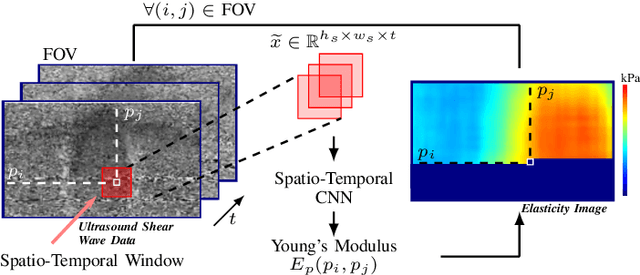
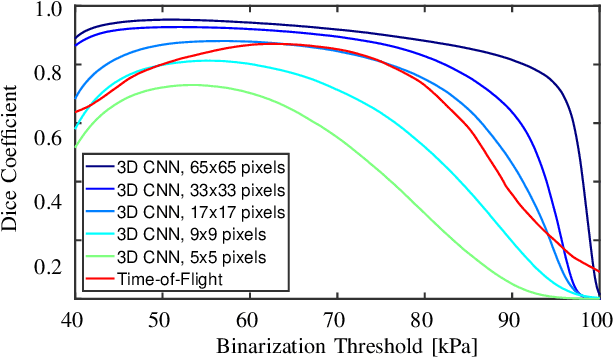
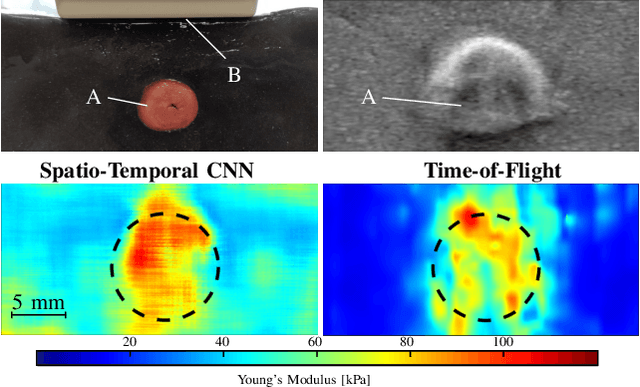

Abstract:Ultrasound shear wave elasticity imaging is a valuable tool for quantifying the elastic properties of tissue. Typically, the shear wave velocity is derived and mapped to an elasticity value, which neglects information such as the shape of the propagating shear wave or push sequence characteristics. We present 3D spatio-temporal CNNs for fast local elasticity estimation from ultrasound data. This approach is based on retrieving elastic properties from shear wave propagation within small local regions. A large training data set is acquired with a robot from homogeneous gelatin phantoms ranging from 17.42 kPa to 126.05 kPa with various push locations. The results show that our approach can estimate elastic properties on a pixelwise basis with a mean absolute error of 5.01+-4.37 kPa. Furthermore, we estimate local elasticity independent of the push location and can even perform accurate estimates inside the push region. For phantoms with embedded inclusions, we report a 53.93% lower MAE (7.50 kPa) and on the background of 85.24% (1.64 kPa) compared to a conventional shear wave method. Overall, our method offers fast local estimations of elastic properties with small spatio-temporal window sizes.
A novel optical needle probe for deep learning-based tissue elasticity characterization
Sep 20, 2021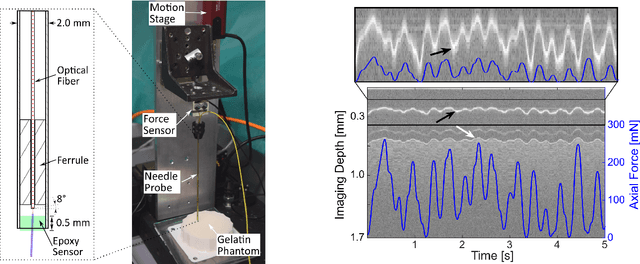
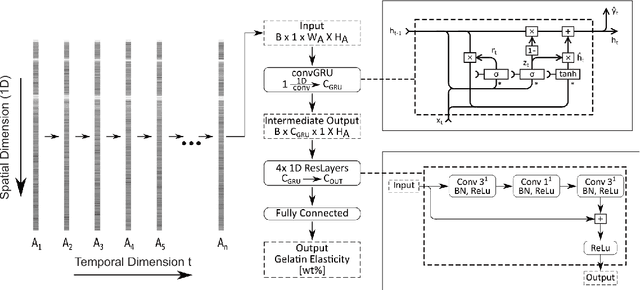
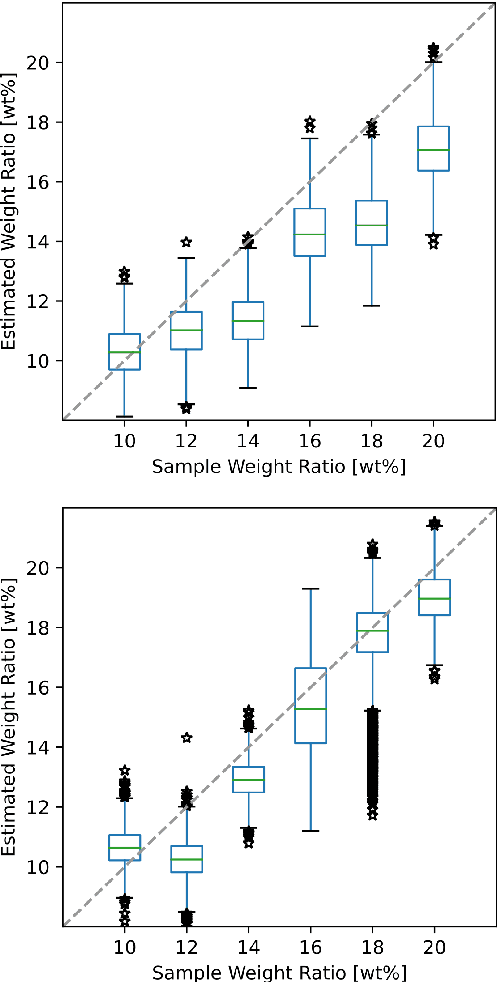
Abstract:The distinction between malignant and benign tumors is essential to the treatment of cancer. The tissue's elasticity can be used as an indicator for the required tissue characterization. Optical coherence elastography (OCE) probes have been proposed for needle insertions but have so far lacked the necessary load sensing capabilities. We present a novel OCE needle probe that provides simultaneous optical coherence tomography (OCT) imaging and load sensing at the needle tip. We demonstrate the application of the needle probe in indentation experiments on gelatin phantoms with varying gelatin concentrations. We further implement two deep learning methods for the end-to-end sample characterization from the acquired OCT data. We report the estimation of gelatin sample concentrations in unseen samples with a mean error of $1.21 \pm 0.91$ wt\%. Both evaluated deep learning models successfully provide sample characterization with different advantages regarding the accuracy and inference time.
* Accepted at CURAC 2021, 2nd Place in the Best Paper Awards
 Add to Chrome
Add to Chrome Add to Firefox
Add to Firefox Add to Edge
Add to Edge